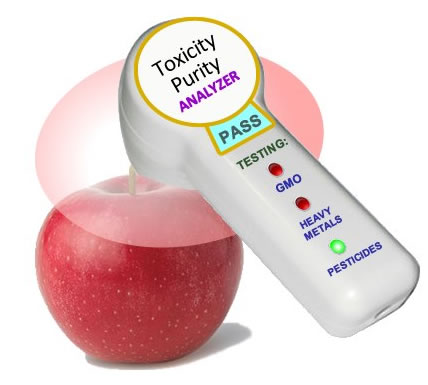We’re One Step Closer To Detecting Pesticides and GMOs With Smartphones
 By Marco Torres
By Marco Torres
The growing interest in biodetection from consumers has reached a global audience. Detecting genetically modified organisms and pesticides in very low concentrations with smartphones will one day be a reality. An international team of researchers led by Ivo Stassen and Rob Ameloot from KU Leuven, Belgium, have began to pave the way to possibilities that we only dreamed of a decade ago.
Every human being on Earth, whether living in a rural or isolated area, in the middle of a large city, or near an industrialized area, now contains at least 700 contaminants in their body including pesticides, pthalates, benzenes, parabens, xylenes and many other carcinogenic and endocrine disrupting chemicals.
We are being bombarded on a daily basis by an astronomical level of toxicity, all controlled by chemical terrorists on behalf of the food industry. Moreover, many of these toxins affect our fertility and those of successive generations.
Widget not in any sidebars
The best-known electronic nose is the breathalyzer. As drivers breathe into the device, a chemical sensor measures the amount of alcohol in their breath. This chemical reaction is then converted into an electronic signal, allowing the police officer to read off the result. Alcohol is easy to detect, because the chemical reaction is specific and the concentration of the measured gas is fairly high. But many other gases are complex mixtures of molecules in very low concentrations. Building electronic noses to detect them is thus quite a challenge.
Currently many devices are available on the market that allow consumers to breathe into adapters connected to smartphones for gas detection and results are sent wirelessly to the devices.
Virus and nanoparticle-based DNA sensors will be able to detect and analyze organisms one-thousandth of the width of a human hair.
Researchers from KU Leuven have now built a very sensitive electronic nose with metal-organic frameworks (MOFs). “MOFs are like microscopic sponges,” postdoctoral researcher Ivo Stassen explains. “They can absorb quite a lot of gas into their minuscule pores.”
“We created a MOF that absorbs the phosphonates found in pesticides and nerve gases. This means you can use it to find traces of chemical weapons such as sarin or to identify the residue of pesticides on food. This MOF is the most sensitive gas sensor to date for these dangerous substances. Our measurements were conducted in cooperation with imec, the Leuven-based nanotechnology research centre. The concentrations we’re dealing with are extremely low: parts per billion — a drop of water in an Olympic swimming pool — and parts per trillion.”
 “We’re interested in biodetection that needs to be performed outside of the laboratory,” said Brian Cunningham, a professor of electrical and computer engineering and of bioengineering at Illinois. “Smartphones are making a big impact on our society — the way we get our information, the way we communicate. And they have really powerful computing capability and imaging. A lot of medical conditions might be monitored very inexpensively and non-invasively using mobile platforms like phones. They can detect molecular things, like pathogens, disease biomarkers or DNA, things that are currently only done in big diagnostic labs with lots of expense and large volumes of blood.”
“We’re interested in biodetection that needs to be performed outside of the laboratory,” said Brian Cunningham, a professor of electrical and computer engineering and of bioengineering at Illinois. “Smartphones are making a big impact on our society — the way we get our information, the way we communicate. And they have really powerful computing capability and imaging. A lot of medical conditions might be monitored very inexpensively and non-invasively using mobile platforms like phones. They can detect molecular things, like pathogens, disease biomarkers or DNA, things that are currently only done in big diagnostic labs with lots of expense and large volumes of blood.”
“Modern biological research is also allowing an extension of laboratory devices on to small computer chips to detect biological information within DNA sequences,” said biotech specialist Dr. Marek Banaszewski. “Bioinformatic algorithms within programs will aid the identification of transgenes, promoters, and other functional elements of DNA, making detection of genetically modified foods on-the-spot and real-time without transportation to a laboratory.”
New chemical sensors will easily be integrated into existing electronic devices, Professor Rob Ameloot adds. “You can apply the MOF as a thin film over the surface of, for instance, an electric circuit. Therefore, it’s fairly easy to equip a smartphone with a gas sensor for pesticides and nerve gas.”
“Further research will allow us to examine other applications as well,” Professor Ameloot continues. “MOFs can measure very low concentrations, so we could use them to screen someone’s breath for diseases such as lung cancer and MS in an early stage. Or we could use the signature scent of a product to find out whether food has gone bad or to distinguish imitation wine from the original. This technology, in other words, offers a wide range of perspectives.”
Also Read: Smartphone Microscope Will Detect GMO, Nanoparticles and Viruses
Marco Torres writes for PreventDisease.com, where this article first appeared.



